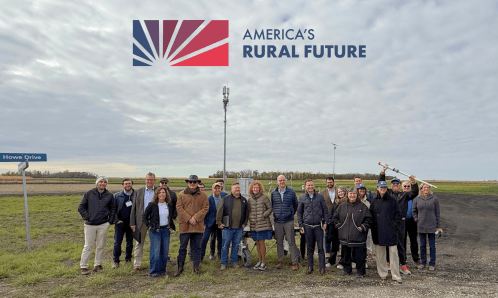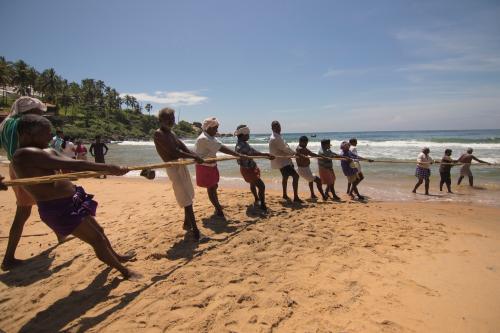What uses more electricity: Liberia or Cowboys Stadium on game day? This question was the theme of a Wall Street journal blog prompted by President Ellen Johnson Sirleaf’s declaration that Cowboys Stadium uses more electricity than the total installed capacity of her country, Liberia.
In that small West African country, only 1 percent of people living in cities have access to electricity. The lack of access to electricity hurts hospital patients who cannot be treated properly, children who cannot get access to refrigerated vaccines, students who cannot study at night, girls who have to hunt for firewood instead of going to school, women who cannot venture outside their homes after dusk, business people who pay more than half of their operating costs on power alone, and, as a result, consumers who pay higher prices to buy goods or services.
Given that Liberia only recently emerged from a terrible conflict, one would think that the rest of sub-Saharan Africa (SSA) fares better when it comes to access to power. Unfortunately, this is not the case: 550 million Africans are in the same situation as Liberians. Africa started 50 years ago with infrastructure comparable to those in Southeast Asia, but now it is lagging behind other developing countries. Blame the lack of maintenance and poor investment decisions, especially in the post-independence period—the so-called “bridges to nowhere” and “white elephants.” Furthermore, Africa’s infrastructure services, whether for power, water, road freights, mobile telephones or internet services, are twice as expensive as elsewhere. Sadly, Africa’s infrastructure problems are most acute in fragile states such as Liberia.
Improving infrastructure should contribute to economic growth and help achieve the Millennium Development Goals. About 60 percent of the world’s uncultivated, arable land is in Africa, but because of poor roads and a lack of storage, African farmers can lose up to half of their crop just trying to get it to market. Some studies indicate that from 1990 to 2005, infrastructure—especially investments in telecommunication services—contributed almost 1 percent to SSA per capita economic growth.
According to the Africa Infrastructure Country Diagnostic, the continent’s infrastructure spending needs stand at about $93 billion per year, and about 40 percent of total spending needs are associated with power. Using their meager fiscal resources, African governments spend about $45 billion—about one-third of which is contributed by donors and the private sector—per year in infrastructure. Two-thirds of the public sector money is used to operate and maintain existing infrastructure and one-third is to finance new projects. This leaves a financing gap of $48 billion and begs the question of how to finance it.
A more efficient use of existing infrastructure can reduce this gap by $17 billion. In order to achieve this goal, African policymakers must focus on reducing inefficiencies through measures such as rehabilitating existing infrastructure, targeting better subsidies and improving budget execution. Should inefficiencies be addressed, the remaining infrastructure funding gap would then be $31 billion a year, mostly in the power sector.
In setting up policies to finance Africa’s remaining infrastructure gap, two areas should be on top of the agenda for African policymakers.
1. Engage, coordinate and leverage different sources of funding
The long-term maturity of infrastructure projects and their large scale require different types of financiers, including private sector, bilateral and multilateral partners. Policymakers therefore need to engage and coordinate with many partners. One challenge will be to find ways to leverage aid flows so as to attract the private investment necessary to implement SSA infrastructure agenda.
Recent developments are encouraging: Over the past five years, the African Development Bank (AfDB) has delivered over $5.4 billion in critical infrastructure investments on the continent through private sector and public-private partnership (PPP) financing. The Africa50 Infrastructure Fund that the AfDB recently launched with the Made In Africa Foundation will not only finance projects but also help develop bankable projects. It currently takes an average of seven years to go from project preparation to project development. Africa50 aims at raising $500 million by the first half of 2014 to help shorten this time to less than three years.
The World Bank Group, which includes its private arm, the International Financing Corporation (IFC), and the Multilateral Investment Guarantee Agency (MIGA), which provides political risk insurance, has a new strategy that aims to use financial innovation and partnerships with the private sector to fund selected sectors, including infrastructure. China has recently pledged $3 billion for joint investments with the IFC to support private sector development in emerging markets, including in African infrastructure.
The China-Africa Development Fund—a subsidiary of the China Development Bank—has already financed projects in more than 30 Africa countries. The projects are estimated to bring further Chinese investments in Africa.
President’s Obama recent initiative, Power Africa aims to double electricity access in SSA and a recently introduced bipartisan legislation—the Electrify Africa Act of 2013—should lead to a strategic approach to support affordable and reliable electricity in SSA. One of the act’s goals is to provide access to more than 50 million people by installing at least 20,000MW of additional generation capacity by 2020. The act would require action from a number of U.S. institutions, including the U.S. Agency for International Development, the Overseas Private Investment Corporation, and the Trade and Development Agency, and would encourage the World Bank and the AfDB to increase electrification investments in SSA.
2. Financial Innovation
African policymakers will also need to create appropriate innovative financing solutions. So far, private sector investment has focused on areas such as mobile telephones, power plants and container terminals. In other areas, such as power, water and railways, the private sector has preferred the use of concessions and other types of contracts. Innovative financing can play a role in attracting private sector funds to these areas. Financing infrastructure projects is challenging because of the large size, long tenors and complexity of projects. In SSA, local banks, which dominate the financial sector, are not able to provide sufficient long-term finance.
Untapped sources of funding are also relevant. The use of diaspora bonds—like those issued by Ethiopia—as well as the placement of infrastructure bonds to the diaspora—like those in Kenya—are being explored by other African countries. For instance, Kenya marketed infrastructure bonds to retail investors, including from the diaspora. Islamic financial instruments such as sukuk have been used to finance infrastructure projects in countries such as Malaysia, Indonesia, and in the Middle East and could attract investors from such countries. In project finance, solutions to mitigate credit risk could involve multilateral partners. Berne Union data show that medium- and long-term credit guarantees in SSA reached $9.1 billion in 2012, but were highly concentrated in Angola, Congo, Ethiopia, Ghana, Nigeria, South Africa and Zambia.
Do not forget investments in financial infrastructure: Most efforts are currently dedicated to investments in social infrastructure (water supply, sanitation, sewage disposal, education and health) and physical infrastructure (transportation, power, and information and communication technologies). However, given the potential role of deeper financial markets and more developed capital markets in helping find the necessary resources for such investments, policymakers should also consider improving the infrastructure of the financial system, starting with the payments system.
Regional solutions make sense for building the infrastructure necessary to exploit the new oil and gas fields in East Africa. There is, at the moment, a coordinated approach to address the very large gap in financing of projects. The New Partnership for Africa’s Development Infrastructure Project Preparation Facility (IPPF) is a fund set up to assist in developing high-quality infrastructure proposals. Managed by the AfDB, the 2007/08 IPPF pipeline had some 30 projects valued at $50 million, of which the energy and transport sectors account for 80 percent.
Let me conclude with a note of caution, however. Large infrastructure projects are expensive, complex and require adequate and transparent governance structures to avoid a misuse of public funds. To avoid the “bridges to nowhere” of past, policymakers should separate political promises from technical decisions that should be based on appropriate evaluation methods to assess costs and benefits. To avoid the “white elephants” of the past, they should improve infrastructure planning and assessment, assess risks from execution, avoid cost overruns and carefully assess expected maintenance costs. This will need an institutional strengthening of the sector line ministries.
By the way, the results of the Liberia vs. Cowboys question are, according to Bob Brackett (energy analyst and football fan) that “during moments of peak demand on game day, Cowboys Stadium may consume up to 10 megawatts of electricity and Liberia has the capacity to pump less than a third as much power into its national grid.”
The Brookings Institution is committed to quality, independence, and impact.
We are supported by a diverse array of funders. In line with our values and policies, each Brookings publication represents the sole views of its author(s).



Commentary
Financing Africa’s Infrastructure Gap
October 9, 2013